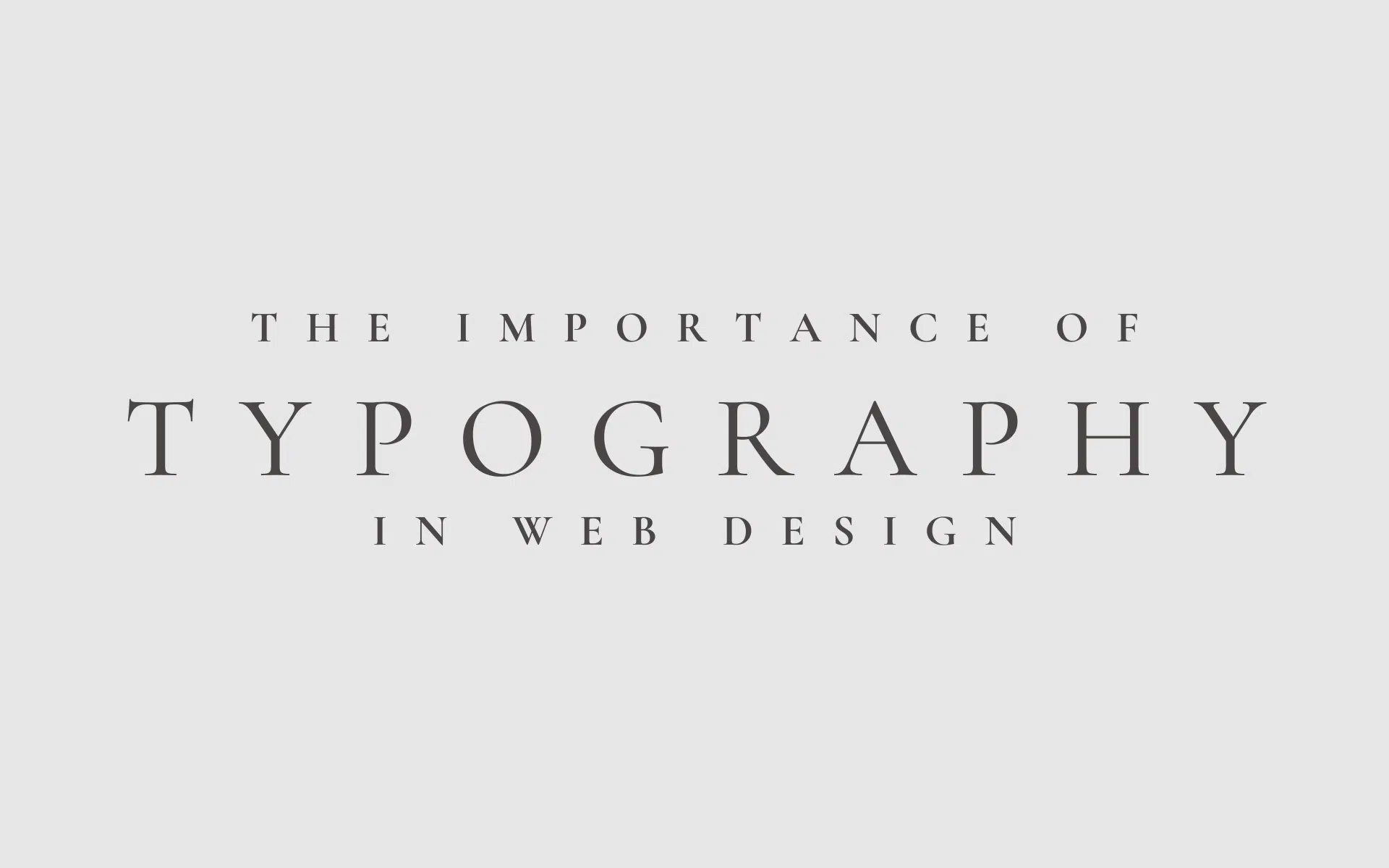Why Typography Matters: Enhancing User Experience Through Web Design Typography




Typography in web design refers to the strategic use of text to ensure content is readable, visually appealing, and aligned with the website’s goals. It involves selecting and arranging fonts, sizes, spacing, and styles to communicate effectively with users while enhancing the overall user experience and brand identity. Typography is a critical yet often overlooked element of web design. It directly influences a website’s user experience, visual appeal, and credibility. When implemented correctly, typography improves readability, establishes brand identity, and increases engagement. According to a Google study (2020), users form aesthetic opinions about websites within 50 milliseconds. Typography is central to that first impression and proper font usage makes for good design practices.
This article examines why typography matters, its role in content structure, and practical ways to use it effectively to enhance your website’s performance.
Typography is the primary method of communication on any website. It impacts how users interact with and perceive the content. Proper typography creates a clear visual hierarchy, improving navigation efficiency and comprehension.
Websites with disorganized, poorly selected fonts or inconsistent text formatting frustrate visitors. Cluttered text with no spacing or distorted content diminishes legibility and trustworthiness. A study by UserTesting (2022) found that 85% of users value ease of reading over website design when judging credibility.
Users can quickly consume information without confusion when typography aligns with readability and aesthetics. Effective typography promotes:
Typography relies on two essential components: readability and legibility.
Both components are affected by several factors, including:
When typography achieves the right balance of these elements, it enhances content structure and visual aesthetics. For instance, websites like Medium excel at delivering long-form content through clean layouts, proper font choices, and consistent spacing.
In contrast, poorly implemented typography—such as excessive spacing or inappropriate font pairings—distracts users and diminishes user engagement.
Typography influences how users navigate a website. The well-structured text guides visitors effortlessly through content, improving their experience. Key methods to enhance navigation through typography include:
For example, a call-to-action button with bold, contrasting typography will attract attention and encourage clicks. A Nielsen Norman Group study (2021) found that well-structured typography can increase page viewing time by up to 90%.
Effective navigation ensures users engage longer and interact with content as intended, increasing conversion rates and satisfaction.
Font selection is vital for legibility, branding, and content visibility. Different fonts evoke specific emotions and align with a website’s tone.
Sans-serif fonts like Arial, Open Sans, and Roboto are clean, modern, and highly legible. Their simplicity makes them ideal for digital interfaces, especially on small screens.
Serif fonts such as Times New Roman or Georgia convey formality and elegance. They are often used for long-form content or printed materials where distinct letterforms improve reading flow.
Combining contrasting fonts—like bold Montserrat headings with clean Lora body text—adds visual interest without sacrificing clarity. Effective font pairing improves visual appeal and strengthens brand identity.
Font Use Cases:
Web designers must choose fonts that align with their audience’s preferences and the website’s purpose. For example, a fashion e-commerce website targeting teens might use trendy, playful fonts, while a finance blog would opt for professional and minimalist typography.
Typography shapes a website’s visual aesthetics, helping create a professional, engaging design. Key techniques include:
Websites like Apple showcase excellent typographic design. Clean lines, ample white space, and consistent font choices make their product descriptions visually engaging while maintaining clarity.
Effective typography creates a balance between aesthetics and functionality. It attracts users, holds attention, and improves comprehension.
Typography selection depends on the website’s goals, target audience, and content format.
While sans-serif fonts dominate digital contexts due to their high legibility, serif fonts are often chosen for their formal appeal and distinctive style.
To maximize the impact of typography on web design, consider the following guidelines:
For example, a finance blog aimed at younger readers might use a clean, bold sans-serif font like Open Sans paired with a vibrant color palette. This combination creates a modern look while maintaining accessibility.
Typography is more than aesthetics. It directly influences:
Research highlights typography’s importance:
Incorporating effective typography improves user satisfaction, drives conversion rates, and enhances the overall user experience.
Typography is a foundational element of web design. It improves readability, supports website navigation, and enhances visual appeal. By choosing appropriate fonts, establishing a clear visual hierarchy, and prioritizing responsive design, businesses can create engaging, user-friendly websites.
Effective typography combines aesthetics and functionality, ensuring content is clear, accessible, and visually appealing. As studies show, typography directly impacts credibility, user engagement, and conversion rates. Make typography a priority in your web design to deliver a seamless, professional user experience across all devices.